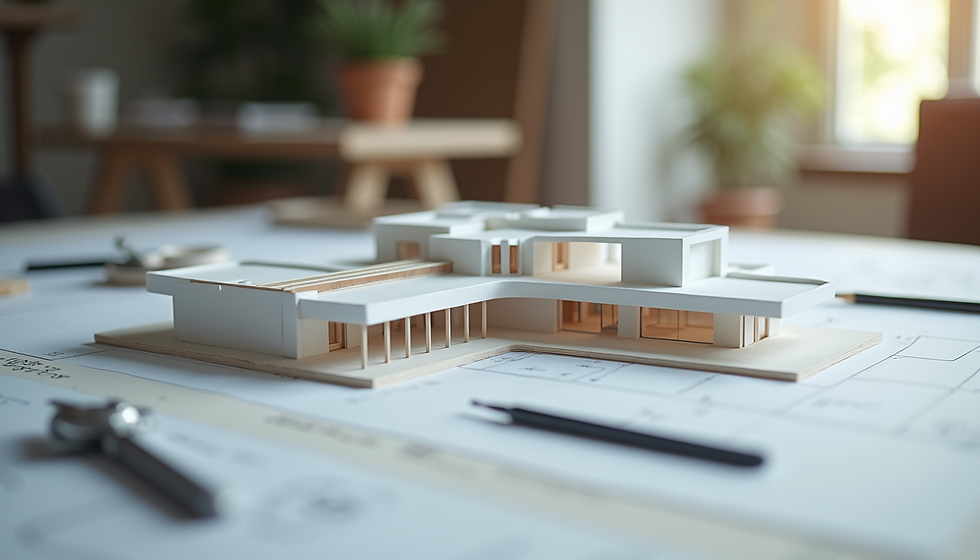The Play Pavilion: Exploring the Collaborative Architectural Masterpiece of Peter Cook and the LEGO Group
- Mathew Kaplan
- Apr 16
- 3 min read

The 2023 Serpentine Pavilion, known as "The Play Pavilion," celebrates an extraordinary collaboration between famous architect Peter Cook and the LEGO Group. This innovative structure, bursting with color and creativity, draws visitors in with its playful design. It acts as a vibrant space that invites families and communities to explore together.
Architectural Design Elements
The Play Pavilion bursts with bold colors and playful shapes, making it visually striking and inviting. Its modular structure, inspired by LEGO bricks, captures the joy of building and rebuilding, encouraging a sense of exploration. For example, the pavilion includes large, colorful panels that can be rearranged, creating different environments for visitors. This unique approach challenges traditional architectural ideas, making the design feel alive and adaptable.
The pavilion serves as both a functional space and a piece of art, aimed at promoting interaction among its visitors. It encourages children and families to engage with architecture in an exciting way. For instance, specific sections of the pavilion can be transformed into areas for play or relaxation, tailored to fit the needs of the moment, reflecting Cook’s philosophy of user involvement.
Themes of Playfulness and Interaction

Peter Cook's legacy, especially through his work with Archigram, showcases the importance of imaginative designs and user experiences. The Play Pavilion embodies this vision by breaking down the boundaries between art and architecture. Visitors—especially young ones—don’t merely observe; they participate and let their imaginations roam free. This interaction is essential, as it turns architecture into a vehicle for community imagination, inspiring shared spaces that address everyone’s needs.
The Play Pavilion also embraces themes of sustainability and inclusivity, creating a welcoming environment for all. For instance, engagement zones where children can play alongside adults allow families to create shared memories, reinforcing community bonds. Research indicates that such interactive public spaces can increase social cohesion by over 20%, making this pavilion a model for future designs.
Influence of the LEGO Group
The collaboration with the LEGO Group profoundly impacts the design of The Play Pavilion. By weaving the essence of LEGO’s modularity into the architectural design, the pavilion stands as a metaphor for creativity. This partnership highlights how commercial design and artistic architecture can merge, creating an engaging experience for users.
The pavilion’s bright colors connect to joyful childhood memories, enhancing its appeal. Studies show that exposure to vibrant colors can improve mood, fostering an environment where families feel comfortable to relax and play. The pavilion's design not only delights those who visit but also sparks inspiration, encouraging creativity across all ages.
Public Reactions and Critical Reviews
Reception to The Play Pavilion has been overwhelmingly positive. Visitors frequently express joy over the playful aesthetics and inviting atmosphere. Critics note how the design transforms typical public park spaces from static areas into dynamic environments that invite exploration and interaction.
Feedback from visitors highlights the pavilion’s role as a gathering place that brings people together. This reinforces the idea that architecture can lead to deeper community relationships, fostering a sense of belonging. Experts suggest that the pavilion could serve as a model for future public spaces, with its ability to blend creativity and utility in ways that invite dialogue and imagination.
A Vision for the Future of Play and Interaction

The Play Pavilion represents a successful collaboration between Peter Cook and the LEGO Group, shining a light on the roles of playfulness, creativity, and interaction in architecture. Its innovative design and welcoming atmosphere mark a notable step forward in architectural discussions and community participation.
In a time when many public spaces seem rigid, The Play Pavilion invites families and individuals to engage meaningfully with their surroundings. This project exemplifies Cook's commitment to user-focused design while highlighting the broader need for architecture that serves as a catalyst for community connections.
Through partnerships that balance commercial and artistic goals, The Play Pavilion demonstrates that innovative design can create spaces that foster community engagement, ensuring that the essence of play remains central to our interactions.




Comments